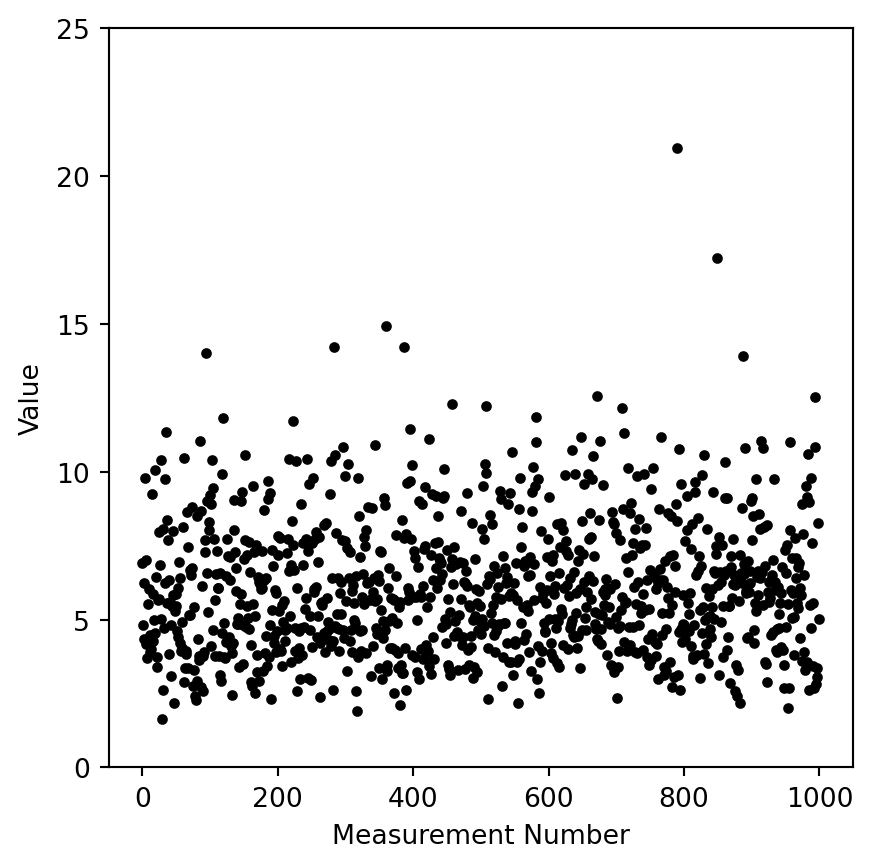import numpy as np
from scipy.stats import gamma
import matplotlib.pyplot as plt
data = gamma.rvs(5, 1, 1, size=1000)
fig, ax = plt.subplots(figsize=[5, 5])
ax.plot(data, 'k.')
ax.set_xlabel('Measurement Number')
ax.set_ylabel('Value')
ax.set_ylim([0, 25])Appendix N — Overview of Project
Table of contents
For the project deliverable in this class, you will create a “webapp” using streamlit.
The purpose of the “app” will be to provide a tool for fitting histograms to statistical data. The interface should include:
- A way for users to enter data. This should include:
- A data entry area for users to enter data by hand
- An option to upload data in the form of a CSV file
- The ability to fit multiple different types of distributions, such as normal, gamma, weibull, and other miscillaneous types.
- Each distribution object in
scipyhas a fitting function, which returns the relevant parameters. - Your app should provide at least 10 different options
- Each distribution object in
- A visualization of the data and the fitted distribution (i.e. a graph)
- An output area that shows the fitting parameters with some information about the quality of the fit (e.g. average error or maximum error between data and curve).
- The app should also provide a ‘manual fitting’ option, where users can adjust sliders to control the various parameters of the current distribution.
- The layout, such as use of tabs, columns, expanders, etc are up to you, but marks will be given for ‘esthetic appeal’ and clean layout.
- The app should be contained to a single page (so avoid the use of Streamlit’s multipage option), and uploaded as a
.pyfile to the LEARN Dropbox. - Bonus marks will be given to students who post their app on Github, and deploy it to the Streamlit Community Cloud
- You are welcome to use genAI to assist with this project. You can get access to many coding agents if you use Co-Pilot in VSCode. Access is free through the University, though I can’t quite recall how to set that up.
N.1 Using scipy.stats Objects
The scipy.stats module contains many distributions which can be used to either generate data that follows a distribution, or to fit a distribution to given data. In this project we’ll use the latter approach. This approach is actually pretty straight-forward, as demonstrated below.
First let’s generate some data using a gamma distribution with parameters of 5, 1, 1.
Now we can fit the gamma distribution to the data, and it should return the same parameters we used to generate the data.
params = gamma.fit(data)
print(params)(np.float64(4.74709076626095), np.float64(1.132154490735322), np.float64(1.0403836667561777))Now let’s generate some values using the gamma distribution with the fitted parameters and overlay in on the original data.


